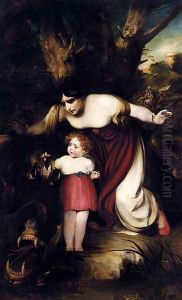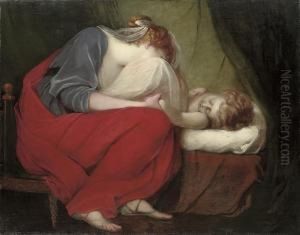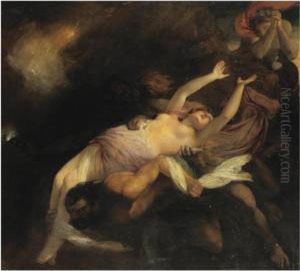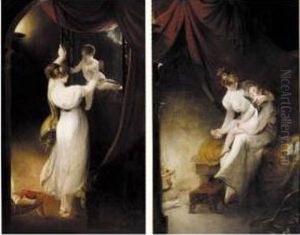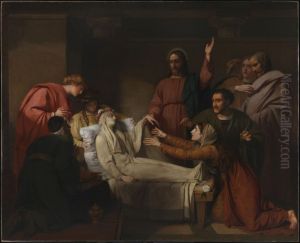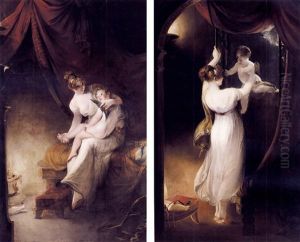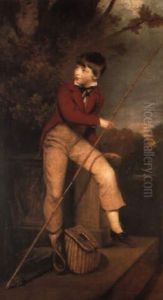Henry Thomson Paintings
Henry Thomson was a notable British painter, born in 1773. His artistic journey began at an early age, showing a profound interest in painting that would define his career. Thomson's education in art took a significant turn when he was admitted to the Royal Academy schools, where he honed his skills and developed a distinctive style that would later become recognized and celebrated.
Throughout his career, Thomson was known for his versatility, excelling in various genres including history painting, which was considered the most prestigious category of art during his time. His ability to capture the essence of historical and literary subjects made his work highly sought after. In addition to history paintings, Thomson also made significant contributions to portrait painting, showcasing his keen ability to capture the personality and essence of his subjects.
One of Thomson's notable achievements was his election as an Associate of the Royal Academy in 1804, followed by his full membership as a Royal Academician in 1814. These accolades were a testament to his skill, popularity, and the high esteem in which he was held by his contemporaries. Throughout his tenure at the Royal Academy, he actively contributed to its exhibitions, showcasing his works alongside those of other distinguished artists of his time.
Thomson's influence extended beyond his canvas; he served as the Principal of the Royal Academy schools from 1827 until his death in 1843. In this role, he played a pivotal part in shaping the next generation of British artists, imparting his knowledge and passion for art to his students. His legacy is not only seen in his beautiful and intricate paintings but also in the impact he had on the art community and the artists he mentored.
Henry Thomson passed away in 1843, leaving behind a rich body of work that continues to be celebrated for its contribution to British art history. His paintings remain a testament to his skill as an artist and his dedication to the craft of painting.
